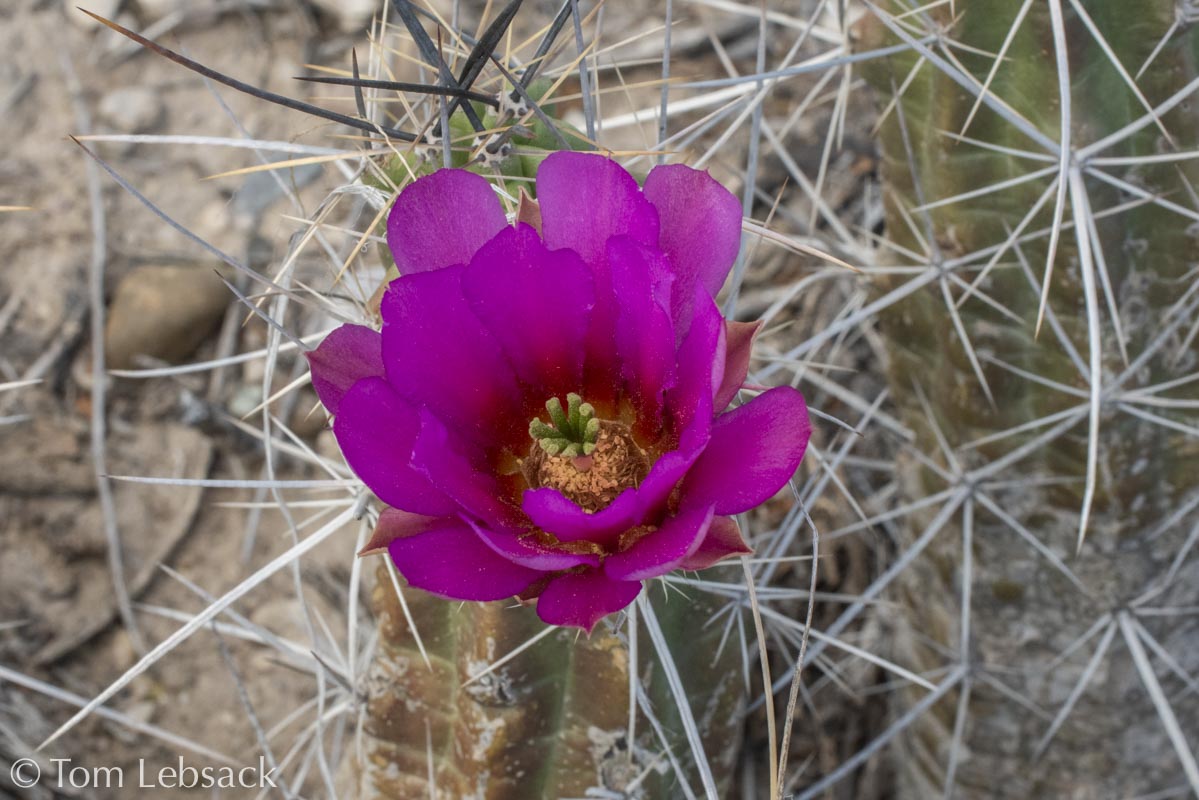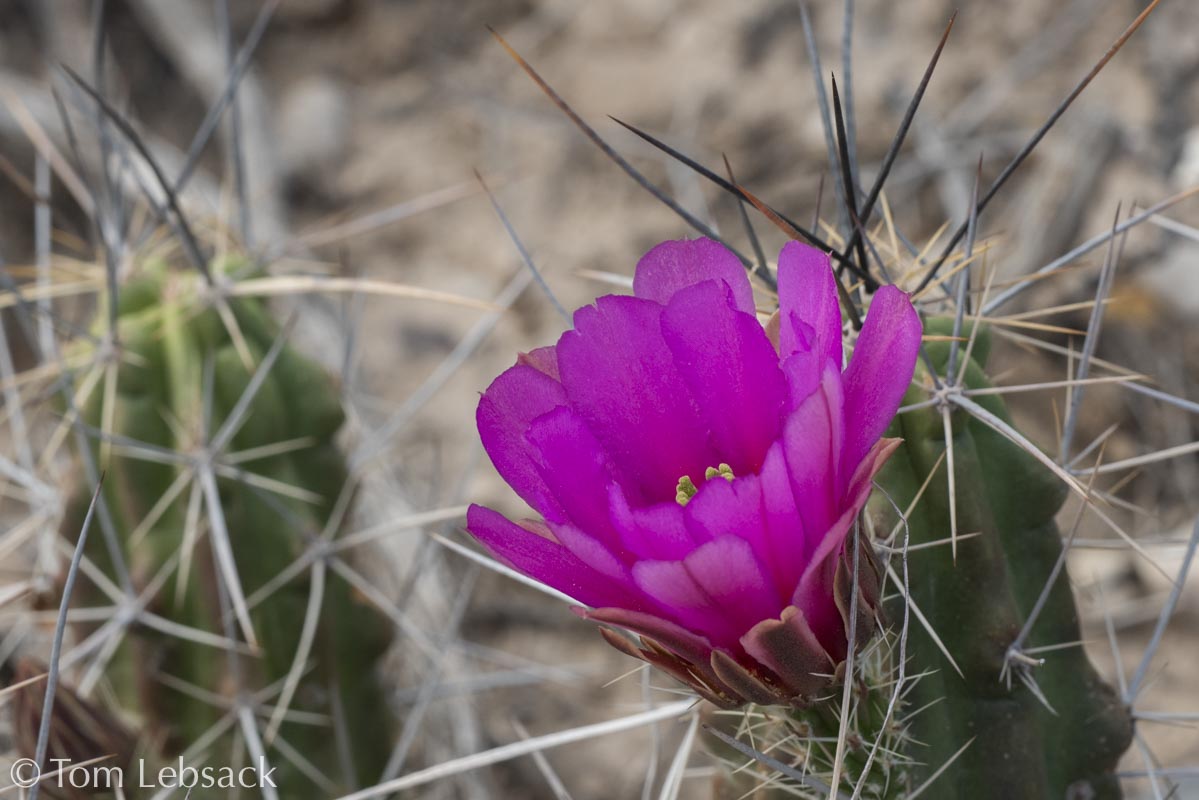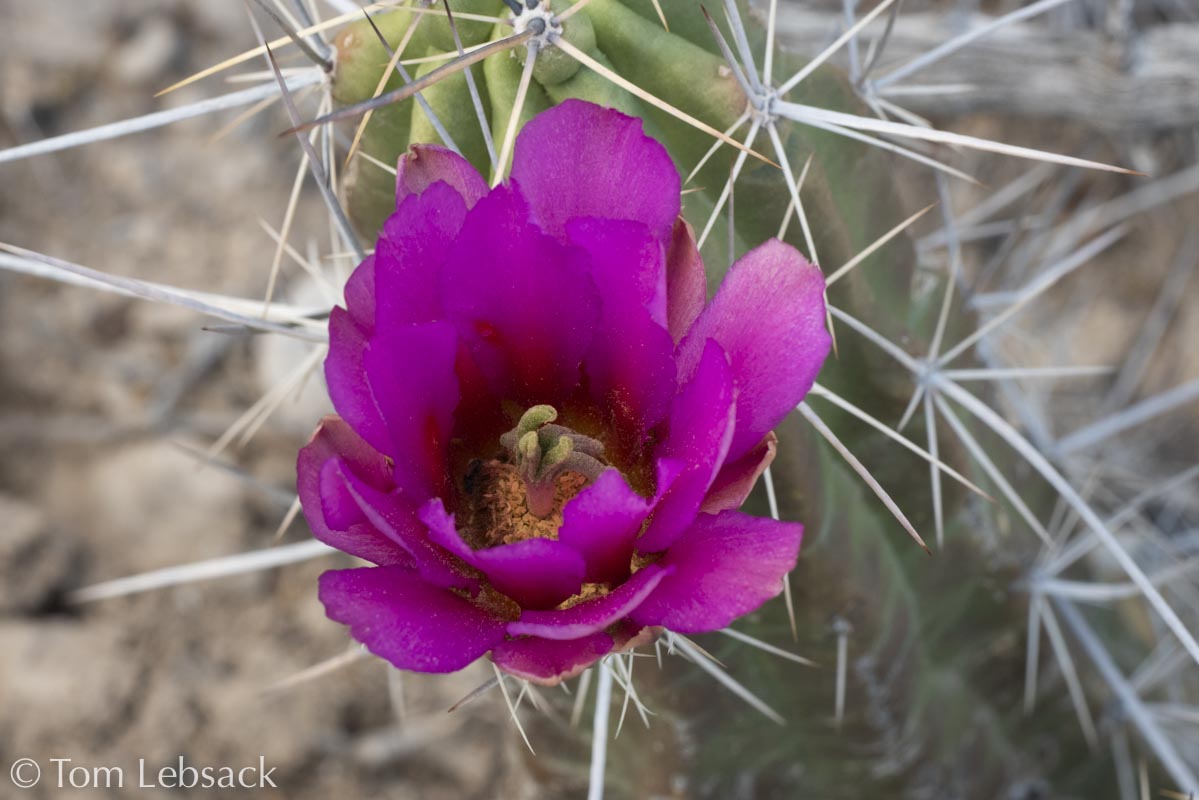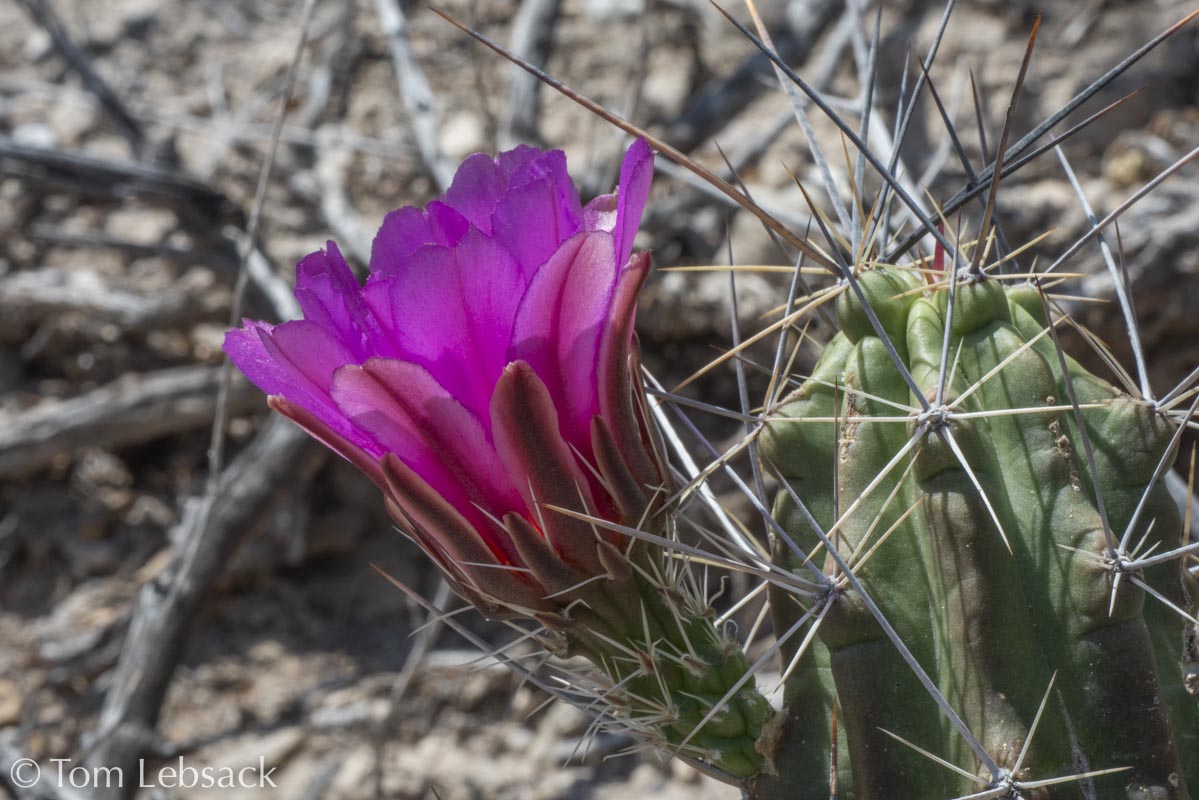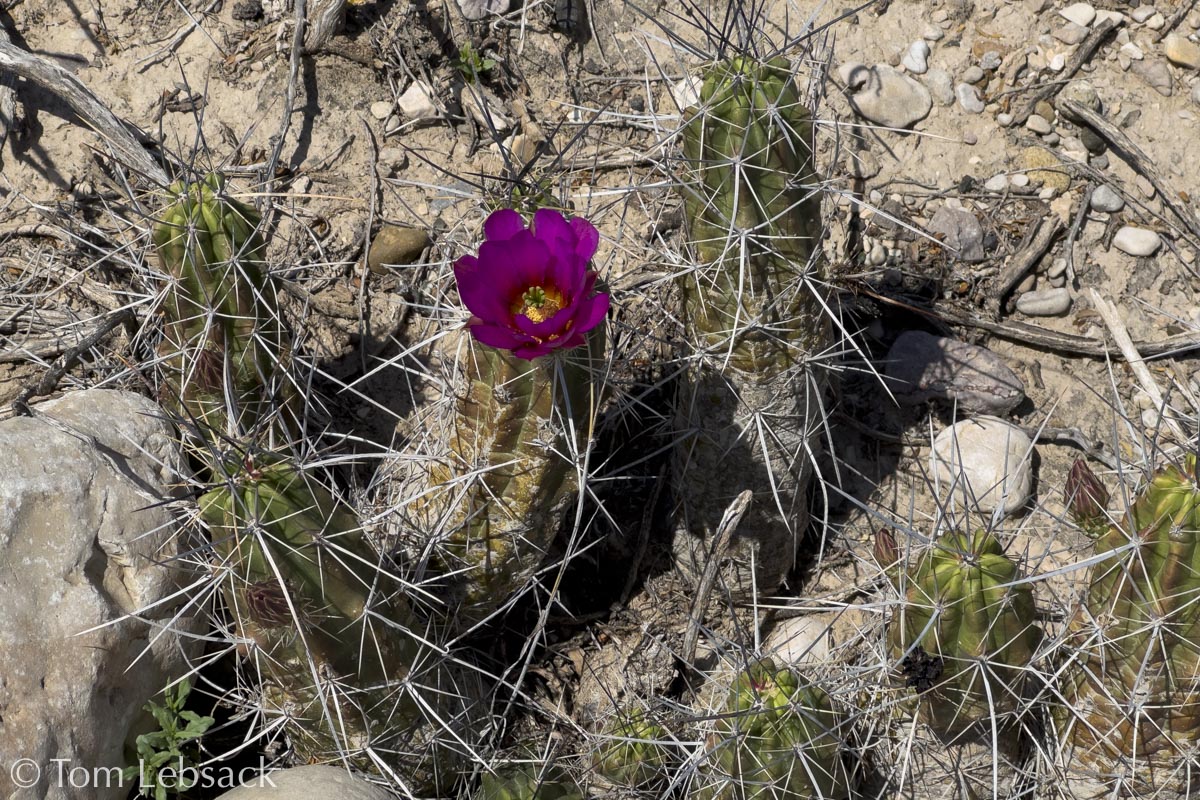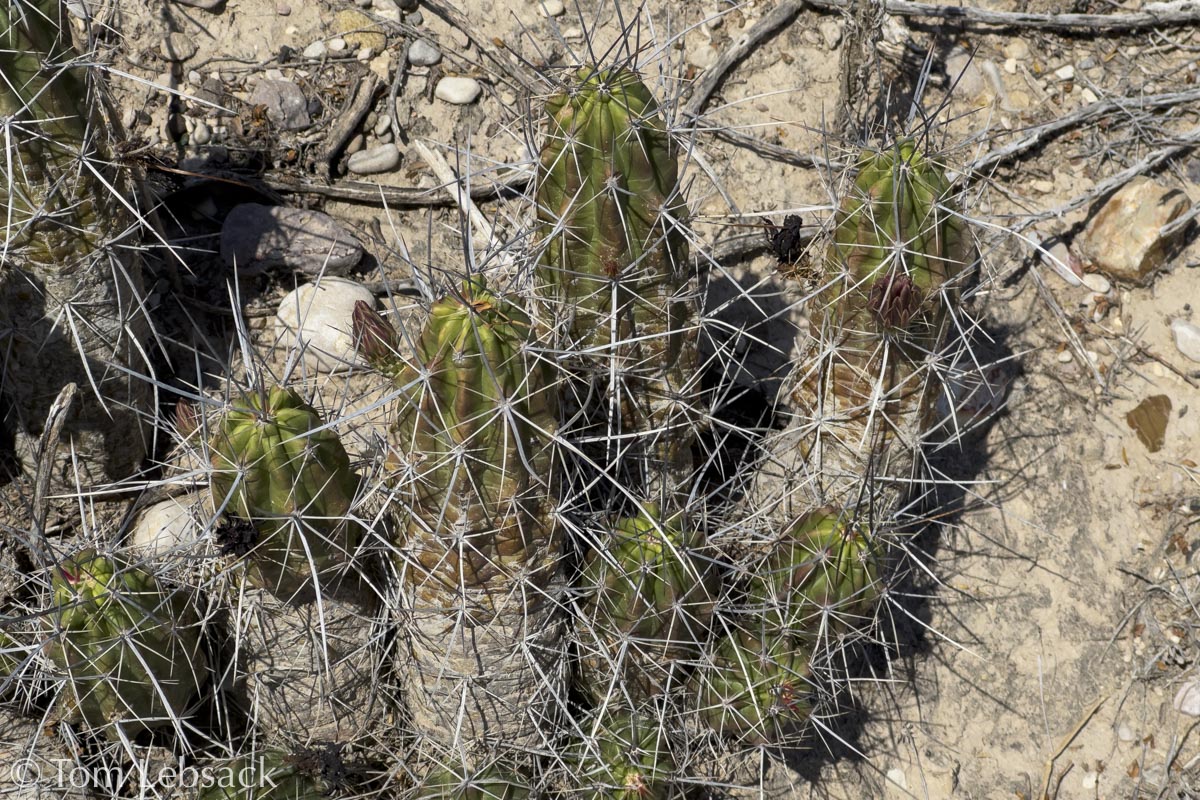Texas Wildbuds
Echinocereus enneacanthus ssp. brevispinus
(Southwest Texas Strawberry Cactus)
| Scientific Name | Echinocereus enneacanthus ssp. brevispinus (Echinocereus enneacanthus var. brevispinus Echinocereus enneacanthus ssp. carnosus) |
USDA PLANTS Symbol | ECENB |
| Common Name | Southwest Texas Strawberry Cactus, Stawberry Cactus, Pitaya | ITIS Taxonomic Serial No. | 912508 |
| Family | Cactaceae (Cactus) | SEINet Reference |
Click Here |
| Description | Habitat: Desert environments; gravelly, sandy and limestone soils in open, scrub areas and flats along the Rio Grande; from 1000 to 3000 ft. Plant: Clumps of several to many pickle-shaped stems, each up to 6 inches long and 2 to 4 inches across, medium to light green or yellowish green. Pads & Spines: Stems with 7 to 10 ribs; areoles 3/8 to 3/4-inch apart; 1 to 3 stout central spines up to 1-3/4 inches long, straight, flattened or angular; 6 to 9 radial spines 3/8 to 3/4-inch long. Inflorescence: Pink to magenta funnel-shaped flowers on each stem, up to 3-1/8 inches long and 2-3/4 to 3-1/2 inches across; throat is dark red near base of tepals; filaments greenish to pink, anthers yellow; 6 to 12 green stigma lobes. Bloom Period: April and May. References: "Cacti of Texas" by Powell, Weedin and Powell, Flora of North America and E. enneacanthus ssp. carnosus in iNaturalist. Note: Similar appearance to E. stramineus ssp. stramineus except that it usually has fewer stems arranged in a flat cluster rather than a congested mound, stems have fewer ribs, and it generally grows at lower elevations. |
BONAP Distribution Map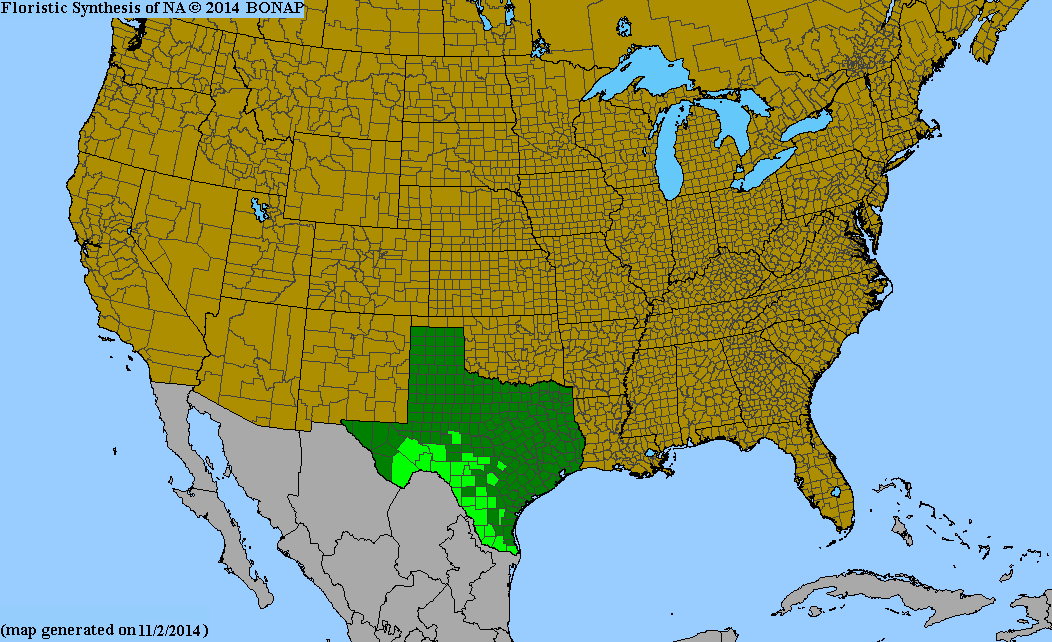
|
Texas Status: Native |
Banner photo of Castilleja indivisa and Lupinus ssp. taken along FM 1323 north of Johnson City, Blanco County
© Tom Lebsack 2025
Every attempt is made to provide accurate, up-to-date, and relevant information, but the completeness or accuracy of any information presented on this website cannot be guaranteed. I use authoritative references to insure high standards of accuracy and review and update the information frequently.
